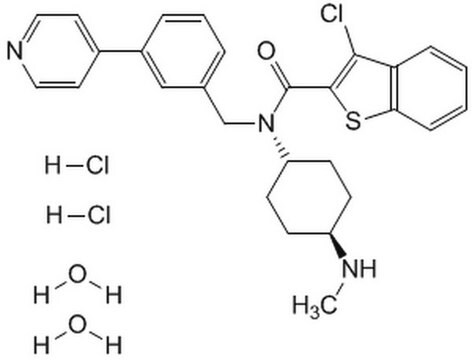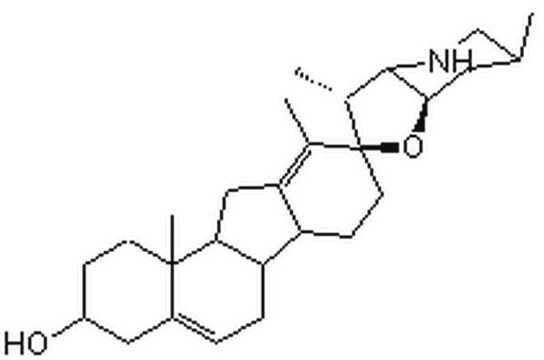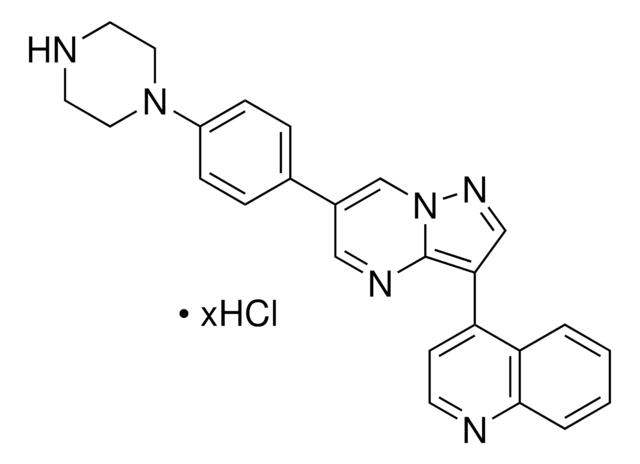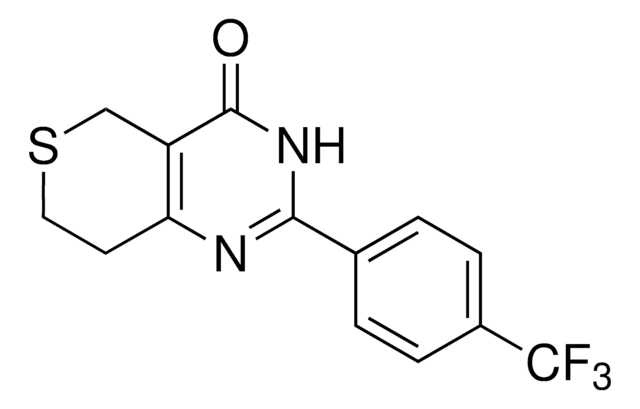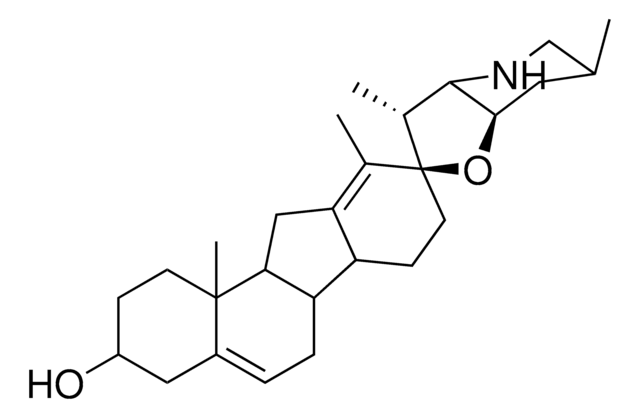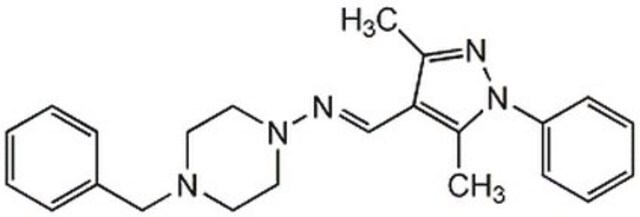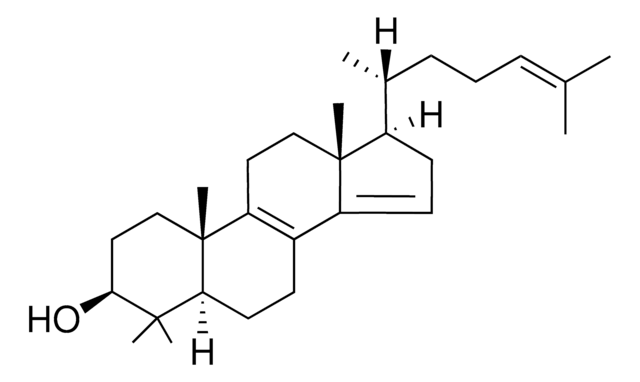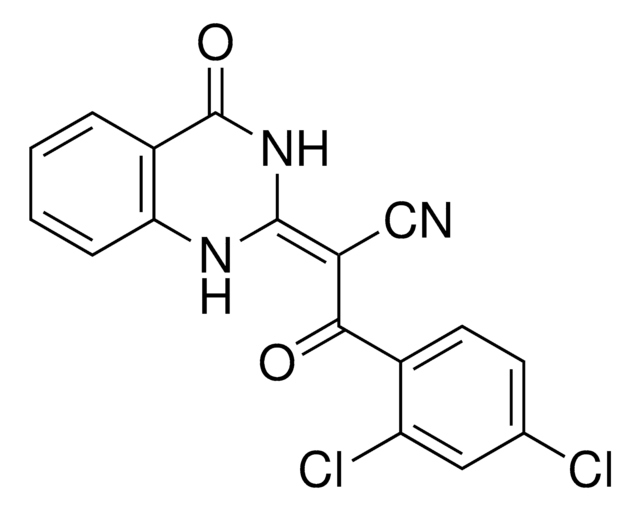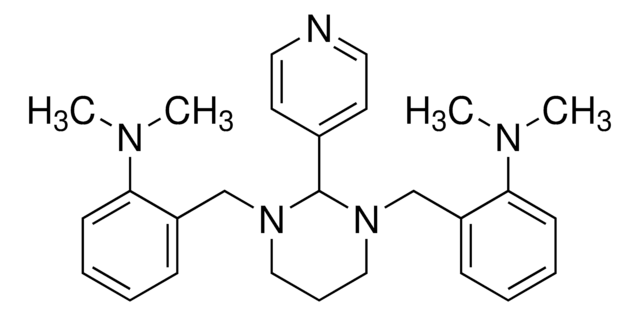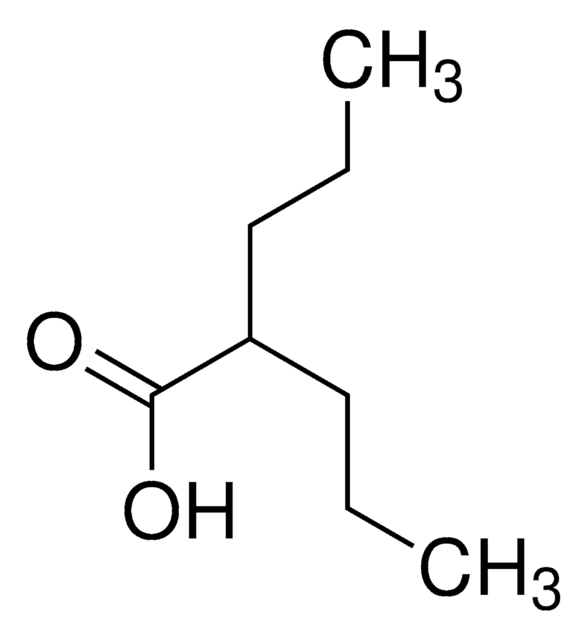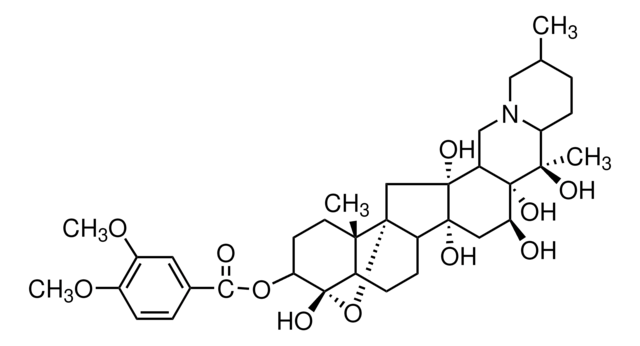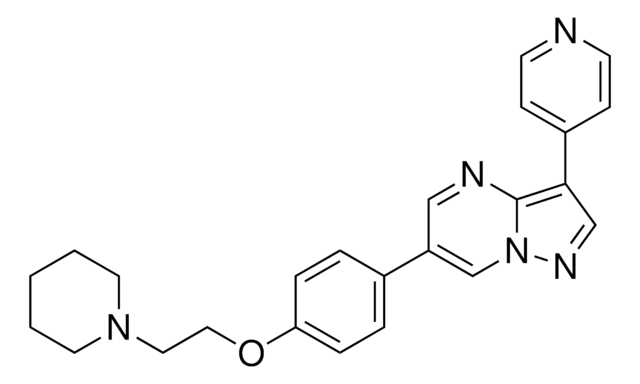Wichtige Dokumente
C4116
Cyclopamin
≥98% (HPLC), solid, Hedgehog signaling pathway inhibitor
Synonym(e):
11-Deoxojervin
About This Item
Empfohlene Produkte
Produktbezeichnung
Cyclopamin, ≥98% (HPLC)
Qualitätsniveau
Assay
≥98% (HPLC)
Form
solid
Farbe
white
Löslichkeit
DMSO: soluble ≥5 mg/mL
H2O: insoluble
Lagertemp.
2-8°C
SMILES String
O.C[C@@H]1CN[C@H]2[C@@H](C)[C@@]3(CC[C@H]4[C@@H]5CC=C6C[C@@H](O)CC[C@]6(C)[C@H]5CC4=C3C)O[C@@H]2C1
InChI
1S/C27H41NO2.H2O/c1-15-11-24-25(28-14-15)17(3)27(30-24)10-8-20-21-6-5-18-12-19(29)7-9-26(18,4)23(21)13-22(20)16(27)2;/h5,15,17,19-21,23-25,28-29H,6-14H2,1-4H3;1H2/t15-,17+,19-,20-,21-,23-,24+,25-,26-,27-;/m0./s1
InChIKey
KDAGJRDPNXDDSB-HBYCUIHISA-N
Angaben zum Gen
human ... EBP(10682)
Suchen Sie nach ähnlichen Produkten? Aufrufen Leitfaden zum Produktvergleich
Allgemeine Beschreibung
Anwendung
- as a sonic hedgehog (Shh) inhibitor in various experiments
- to explore the effects of stress stimulation on the proliferation and differentiation of fibrochondrocytes
- to study its influence on ocular vessel patterning
Biochem./physiol. Wirkung
Leistungsmerkmale und Vorteile
Lagerklassenschlüssel
11 - Combustible Solids
WGK
WGK 3
Persönliche Schutzausrüstung
Eyeshields, Gloves, type N95 (US)
Hier finden Sie alle aktuellen Versionen:
Besitzen Sie dieses Produkt bereits?
In der Dokumentenbibliothek finden Sie die Dokumentation zu den Produkten, die Sie kürzlich erworben haben.
Kunden haben sich ebenfalls angesehen
Artikel
Cancer stem cell media, spheroid plates and cancer stem cell markers to culture and characterize CSC populations.
Verwandter Inhalt
n proliferating cells, the cell cycle consists of four phases. Gap 1 (G1) is the interval between mitosis and DNA replication that is characterized by cell growth. Replication of DNA occurs during the synthesis (S) phase, which is followed by a second gap phase (G2) during which growth and preparation for cell division occurs. Together, these three stages comprise the interphase phase of the cell cycle. Interphase is followed by the mitotic (M) phase.
Apoptosis, or programmed cell death (PCD), is a selective process for the removal of unnecessary, infected or transformed cells in various biological systems. As it plays a role in the homeostasis of multicellular organisms, apoptosis is tightly regulated through two principal pathways by a number of regulatory and effector molecules.
Unser Team von Wissenschaftlern verfügt über Erfahrung in allen Forschungsbereichen einschließlich Life Science, Materialwissenschaften, chemischer Synthese, Chromatographie, Analytik und vielen mehr..
Setzen Sie sich mit dem technischen Dienst in Verbindung.
